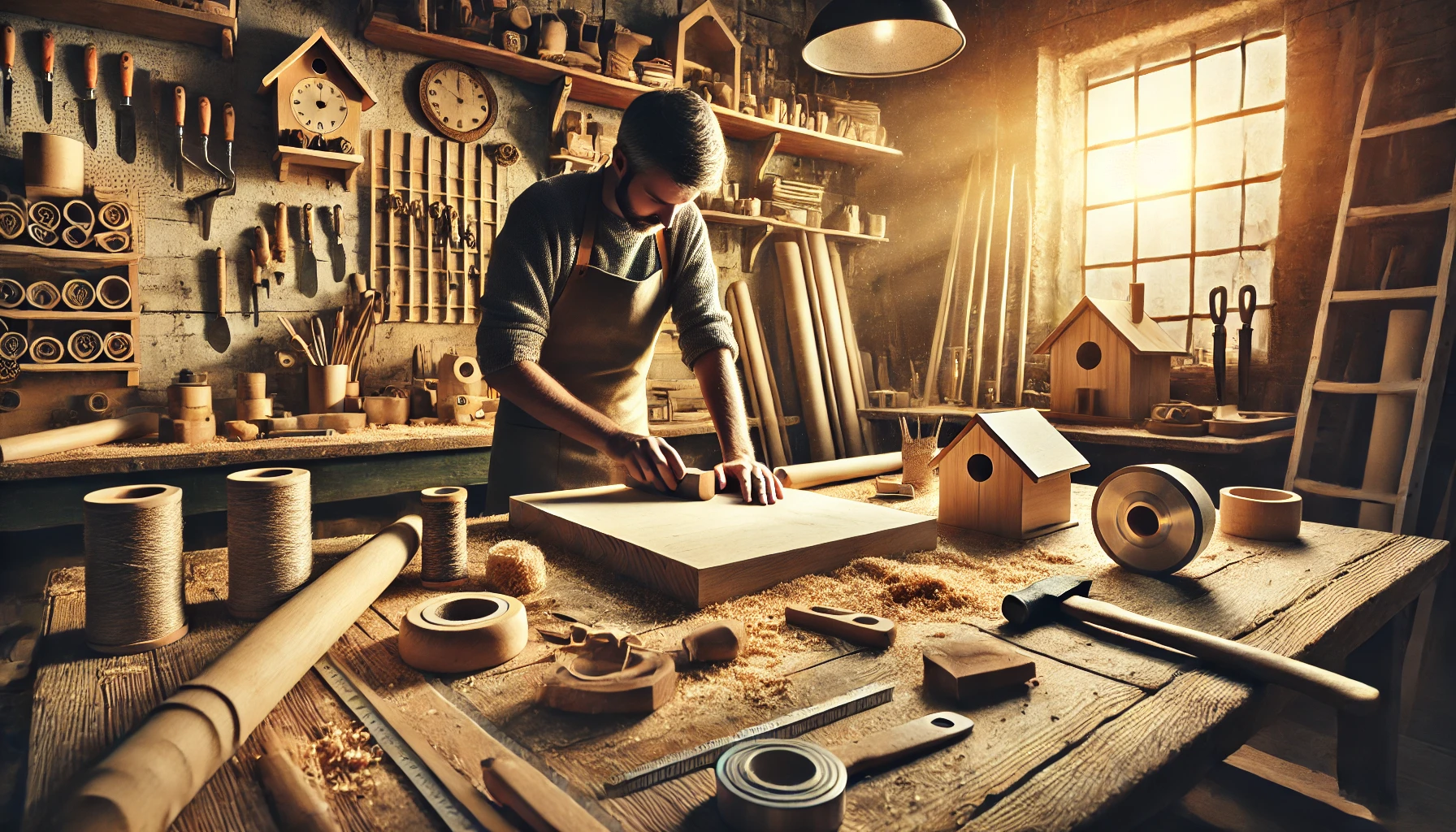Discover the Stress-Relief and Cognitive Development Benefits of Woodworking for All Age Groups
Woodworking, the timeless craft of creating functional and artistic items from wood, has emerged as more than a hobby or profession. It’s increasingly recognized as a therapeutic activity that promotes mental and emotional well-being. Amid today’s fast-paced, stress-laden world, woodworking offers a hands-on, immersive experience that fosters relaxation, focus, and self-expression.
In recent years, research has shown that creative, tactile activities like woodworking have profound impacts on mental health. They serve as a counterbalance to the digital overload of modern life, helping individuals reconnect with physical, purposeful tasks. By engaging the mind and body, woodworking provides a sense of accomplishment and clarity often missing from day-to-day routines.
This article explores how woodworking benefits mental health, cognitive development, and emotional balance across all age groups, providing insights into its history, principles, and practical applications.
History and Background
The Origins of Woodworking
Woodworking is as ancient as humanity itself, with roots tracing back to prehistoric times. Early humans used rudimentary tools to carve wood for survival purposes, such as building shelter, making weapons, and crafting tools. Over millennia, woodworking evolved from a necessity to an art form.
Ancient Egypt is often regarded as a pinnacle in early woodworking, with elaborate furniture and decorative carvings. Similarly, the Chinese and Japanese traditions refined woodworking techniques into highly specialized crafts, blending utility and artistry. In the Middle Ages, guilds formalized woodworking as a profession, passing down techniques that remain foundational today.
The Therapeutic Potential Recognized Over Time
Historically, woodworking’s therapeutic potential has been implicit in its meditative qualities. Monastic communities used woodworking as a daily practice to encourage focus and discipline. In the 20th century, woodworking was formally integrated into occupational therapy programs, particularly for soldiers recovering from injuries and trauma. These programs underscored the craft’s ability to aid physical and emotional rehabilitation.
Core Concepts/Principles
Mindfulness in Motion
Woodworking requires full attention, immersing the individual in the present moment. The process of measuring, cutting, and assembling demands focus, fostering a meditative state that reduces stress and anxiety.
Cognitive Engagement
Planning a woodworking project involves spatial reasoning, critical thinking, and problem-solving. For instance, building a bookshelf requires not only understanding dimensions but also adjusting designs when materials behave unexpectedly. This mental stimulation is particularly beneficial for cognitive development and maintenance.
Emotional Expression
Creating something by hand offers a profound sense of achievement. For those coping with grief or stress, woodworking serves as a channel for emotional release. The tactile nature of working with wood—its textures, smells, and malleability—enhances this expressive process.
Physical Benefits
The act of sawing, sanding, or carving is physically engaging. It improves motor skills and hand-eye coordination, making woodworking a holistic activity that benefits both mind and body.
Current Trends and Developments
The DIY Renaissance
Platforms like YouTube and Pinterest have democratized woodworking. Millions of tutorials empower individuals to tackle projects from simple picture frames to complex furniture, making the craft accessible to beginners.
Therapy Programs
Organizations now integrate woodworking into therapeutic settings, such as veterans’ programs addressing PTSD or workshops for individuals recovering from addiction. These initiatives highlight the craft’s restorative potential.
Integration into Education
Schools increasingly incorporate woodworking into STEM (science, technology, engineering, and math) curricula. By blending traditional craftsmanship with modern technologies like 3D printing and CNC machines, educators prepare students for both creative and technical fields.
Applications and Implications
Mental Health
Woodworking offers a unique antidote to stress. The immersive nature of crafting allows individuals to momentarily set aside worries, fostering a sense of calm. Studies show that creative activities like woodworking can significantly lower cortisol levels, the body’s primary stress hormone.
Cognitive Development
For children, woodworking fosters creativity, patience, and resilience. Tasks like measuring and assembling strengthen problem-solving skills and hand-eye coordination, laying a foundation for academic and personal growth.
Support for Seniors
Woodworking helps seniors maintain cognitive sharpness and dexterity. Simple projects, such as making birdhouses or small shelves, encourage fine motor skills and mental engagement, combating the effects of aging.
Community Building
Group woodworking projects foster collaboration and connection. From constructing community gardens to creating park benches, these activities strengthen social bonds and instill pride in collective achievements.
Challenges and Solutions
Safety Concerns
Handling tools like saws and chisels can intimidate beginners. Comprehensive safety training, whether through workshops or online tutorials, is essential to building confidence and reducing risk.
Cost of Materials
High-quality wood and tools can be expensive. Beginners can start with recycled materials or smaller projects to minimize costs while gaining experience.
Space Limitations
Woodworking often requires a dedicated workspace. Portable workbenches or community woodworking spaces can help those with limited room pursue their craft.
Future Prospects
Sustainability and Reclaimed Materials
As environmental awareness grows, the use of reclaimed and sustainable materials in woodworking is becoming more prevalent. This trend aligns the craft with global conservation efforts.
Technology Integration
Advanced tools like laser cutters and 3D printers are expanding the possibilities of woodworking. These technologies make precision crafting more accessible while maintaining the therapeutic essence of the craft.
Expanding Accessibility
Future initiatives aim to bring woodworking therapy to underserved communities, making its benefits widely available. Programs in schools, retirement homes, and rehabilitation centers are likely to grow in popularity.
Case Studies/Examples
Veterans Overcoming PTSD
A woodworking program for veterans in Texas reported a 40% improvement in participants’ mood and a significant reduction in anxiety after six months. The act of creating tangible, useful items gave participants a renewed sense of purpose.
Children with Learning Disabilities
In California, a pilot program introduced woodworking to children with ADHD. Teachers noted improvements in focus, patience, and teamwork skills, demonstrating the craft’s educational and therapeutic potential.
Testimonials
- “Woodworking gave me a reason to wake up each morning. It’s more than a hobby; it’s my therapy.” – A veteran participant.
- “My child’s confidence soared after completing his first project. Woodworking has been transformative.” – A parent of a young woodworker.
Conclusion
Woodworking is far more than a craft; it’s a path to mental clarity, emotional expression, and personal growth. Whether used as a therapeutic tool for veterans, a developmental activity for children, or a hobby for personal fulfillment, woodworking offers unparalleled benefits.
The versatility and accessibility of woodworking make it a valuable activity for individuals of all ages and skill levels. By embracing this craft, we not only create beautiful, functional items but also foster a deeper connection to ourselves and the world around us.
Call to Action
Are you ready to experience the transformative power of woodworking? Visit WoodCures.com to explore resources, tutorials, and community projects that inspire creativity and healing. Sign up for our newsletter to stay updated on the latest woodworking tips, trends, and therapeutic insights. Join our community forum to share your projects and connect with others on their woodworking journey. Let’s craft a better tomorrow, one project at a time!






